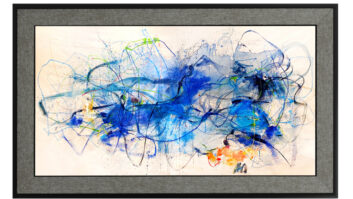NEW YORK — New products launched by componentaudio companies target a wide variety of market segments from modestly priced soundbars to products intended for audiophiles and custom-install customers.
The products include an opening-price soundbar from Yamaha, Denon’s first USB DAC, an expanded assortment of custom-install speakers from Jamo, and a PS Audio DAC said to be the industry’s first to convert PCM to DSD to overcome the overcome the inherent flaws of PCM processing.
Here’s what the companies announced:
Denon: The D+M brand plans March availability of its first USB DAC, the DA-300USB at a universal advertised price of $499.
The 32-bit, 192kHz asynchronous DAC up-samples any incoming signal to 32 bits and accepts a maximum input signal of 192/24 from any of its digital inputs.
The component connects computers to hi-fi systems via USB-B port to bypass the computer’s lower quality sound card. The DAC also incorporates a headphone amplifier stage and features one coaxial and two optical digital S/ PDIF inputs.
The DAC’s USB-B port streams music in native format from a PC in multiple formats for decoding by the DAC. The formats include MP3/MP4, AAC, ALAC, WAV and FLAC HD in up to 24 bit/192kHz resolution. The DAC also supports the DSD format with 2.8MHz and 5.6MHz resolution delivered natively or via DoP (DSD audio over PCM frames).
Jamo: The Klipsch Group brand is expanding its assortment of custom-installed speakers with a Custom 200 series that’s priced more than its opening-price Contractor series but less than its Custom 400 and 600 series.
The four bezel-less speakers consist of the $239-each IW 206 FG in-wall speaker and three in-ceiling models. Those are the $349-each IC 206 LCR FG, the $449/pair IC 208 FG, and the $449/pair IC 206 FG.
It’s the third line in the custom series to feature flat, bezel- less grilles, a spokesperson said. The magnetic grilles are paintable to match a room’s décor.
All are two-way models except for the three-way LCR speaker. All feature adjustable-angle tweeters.
The Custom 200 series, available through dealers in February, brings the acoustic and aesthetic design of the higher priced Custom 400 and Custom 600 lines “into an all-new, high-value line of architectural speakers,” the spokesperson said.
Yamaha: The company upgraded its opening-price active soundbar by adding Bluetooth to play back music streamed from mobile devices and enable a free app to control the system.
The YAS-103 became available in February at a suggested $299 like its predecessor, the YAS-101.
Like its predecessor, the YAS-103 features dual built-in down-firing subwoofers, proprietary Air Surround Xtreme to deliver virtual 7.1-channel surround sound, Dolby Digital and DTS decoding, two full-range drivers, two down-firing subwoofers, a bass reflex port, and Advanced Bass Extension Processing for surround sound.
Also like its predecessor, the wall-mountable bar features two optical inputs, one coaxial input, one analog input, and a learning feature that enables a user’s TV remote to control select soundbar functions. A built-in IR repeater passes through the TV remote-control signals.
In the new bar, Yamaha’s Bluetooth-enabled Home Theater Controller app enables iOS and Android devices to adjust input selection, surround modes and other settings.
PS Audio: The company plans April shipments of a $5,995-suggested DAC that it contended will overcome the flaws of PCM processing to “reveal all the missing information buried within PCM-based digital recordings.”
The PCM decoding process itself masks subtle musical cues, PSB said, but “the missing musical information is still buried deep within our audio libraries waiting to be revealed.”
DirectStream converts all digital inputs, including PCM, to pure 1-bit DSD through a simple circuit path. As a result, the company said, a PCM feed becomes “more linear” and “less edgy,” and “never-beforeheard musical details are released from all digital audio recordings.”
The company believes it’s the first to offer a PCM-to- DSD DAC, whereas it called the reverse — converting DSD to PCM — “commonplace.” The design took seven years to complete.
The “cluttered, circuitous” signal paths of top-end PCM processors, the company said, “mask music’s subtle details” because of their “complex needs,” which include multiple clocks, power supplies and limitations inherent in ICs.
To eliminate problem, DirectStream unifies all inputs (PCM or DSD) at 10x DSD, then uses a single-bit double- rate DSD core engine, which deliver “advantages in simplicity, linearity, and in analog-like overload characteristics that avoid PCM’s ‘hard-clipping’ potential and a PCM processor’s propensity to mask subtle details.” Bluetooth Speakers













